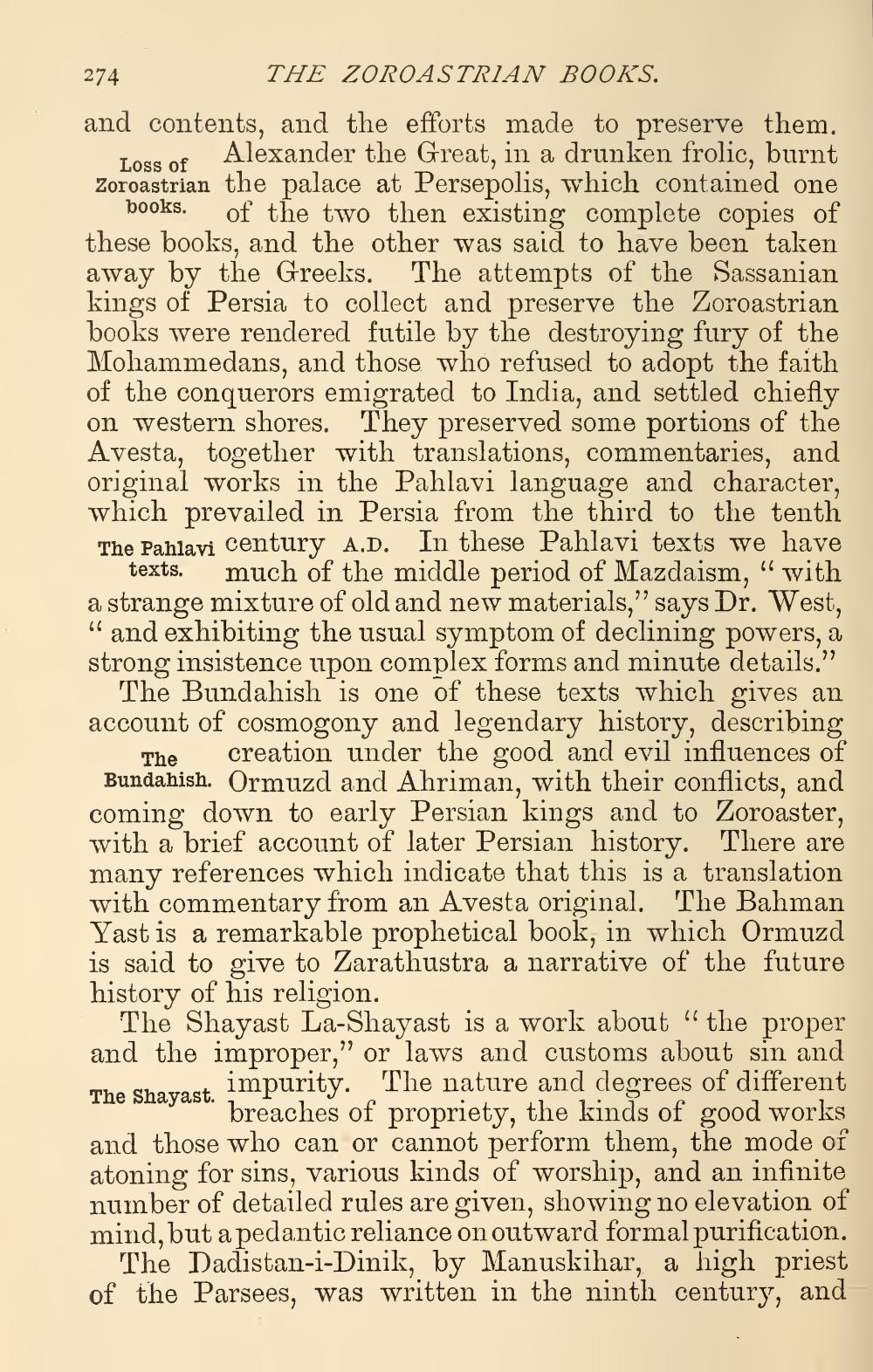________________
274
THE ZOROASTRIAN BOOKS. and contents, and the efforts made to preserve them.
Toss of Alexander the Great, in a drunken frolic, burnt Zoroastrian the palace at Persepolis, which contained one
books. of the two then existing complete copies of these books, and the other was said to have been taken away by the Greeks. The attempts of the Sassanian kings of Persia to collect and preserve the Zoroastrian books were rendered futile by the destroying fury of the Mohammedans, and those who refused to adopt the faith of the conquerors emigrated to India, and settled chiefly on western shores. They preserved some portions of the Avesta, together with translations, commentaries, and original works in the Pahlavi language and character, which prevailed in Persia from the third to the tenth The Pahlavi century A.D. In these Pahlavi texts we have
texts. much of the middle period of Mazdaism, “with a strange mixture of old and new materials," says Dr. West, 6 and exhibiting the usual symptom of declining powers, a strong insistence upon complex forms and minute details."
The Bundahish is one of these texts which gives an account of cosmogony and legendary history, describing
The creation under the good and evil influences of Bundahish. Ormuzd and Ahriman, with their conflicts, and coming down to early Persian kings and to Zoroaster, with a brief account of later Persian history. There are many references which indicate that this is a translation with commentary from an Avesta original. The Bahman Yast is a remarkable prophetical book, in which Ormuzd is said to give to Zarathustra a narrative of the future history of his religion.
The Shayast La-Shayast is a work about "the proper and the improper," or laws and customs about sin and The Shovo st. impurity. The nature and degrees of different
as" breaches of propriety, the kinds of good works and those who can or cannot perform them, the mode of atoning for sins, various kinds of worship, and an infinite number of detailed rules are given, showing no elevation of mind, but a pedantic reliance on outward formal purification.
The Dadistan-i-Dinik, by Manuskihar, a high priest of the Parsees, was written in the ninth century, and




